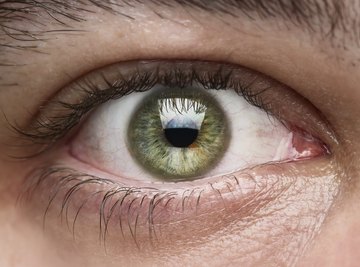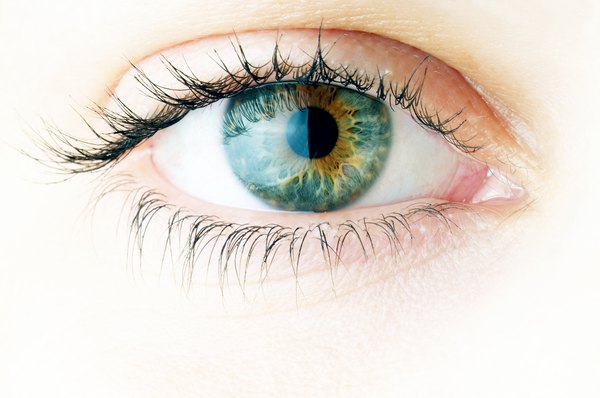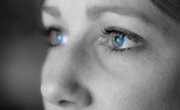
Your eyes work in a similar way to a camera. Light from the world around you passes through the lens and is recorded on the retinas at the back of your eyes. The information from the retinas is then sent to your brain, which converts it into an awareness of objects around you.
Light

It is a slightly arresting fact that the world around you has no color. There are only surfaces that reflect light from the sun in varying wavelengths. Your eye interprets the light from these surfaces, and as a result you see objects as possessing the color wavelength they reflect. Light from everything around you enters the pupil of your eye and is focused by the cornea onto the lens. The lens further focuses and flips the light onto the back of the retina. This information is sent to your brain through the optic nerve. A large portion of your brain is devoted to your perception of vision, and yet relatively little is understood about the brain's role in vision.
Pupil and Cornea

As light enters the pupil, it reacts by either expanding or contracting. This movement adjusts the amount of light which enters the eye itself. You can observe pupils expanding and contracting by looking closely at a person's eye when she looks toward a bright object. As more light enters the pupil, it reacts by contracting, allowing less light through. When less light is entering the eye, the pupil expands to allow more light in. Once through the pupil, light is focused by the transparent cornea onto the lens.
The Lens

In contrast to the cornea, the lens of a human eye is adjustable. It can move, allowing the eye to focus on distant objects, resulting in a sharper image on the retina. The lens and the cornea combined allow humans a sharp focus on objects both near and distant. Once focused by the lens, light reaches the retina.
The Retina

The retina is the inner surface of the eye. Light focused through the pupil, cornea and lens is focused onto the retina as an image of the world around you. It is like the film of a camera as it reacts chemically to light and provides information to the optic nerve. The retina is sometimes visible in photographs as a result of the red-eye effect. The flash from a camera arrives too fast for the pupil to contract, resulting in light reflecting directly off the retina at the back of the eye and back to the camera.
The retina is a complex structure, home to rod- and cone-shaped cells. The rod-shaped cells function mainly in dim light and provide vision mostly in black and white. This is noticeable in a darkened room when the human eye can see in only black and white. The cone-shaped cells, which function best in bright light, allow your perception of color. During light's reflection on the retina, the image is inverted so the optic nerve receives an upside-down image of the world.
The Optic Nerve

One end of the optic nerve is located at the back of each eyeball, and each travels separately to the brain. The inverted image received by the optic nerve is transported to the brain in impulses, where it is corrected. Each optic nerve where it is attached to the retina creates a blind spot. This because there are no rod or cone cells on the optic nerve. You can conduct experiments online to experience your blind spot.
References
Photo Credits
Nastco/iStock/Getty Images
